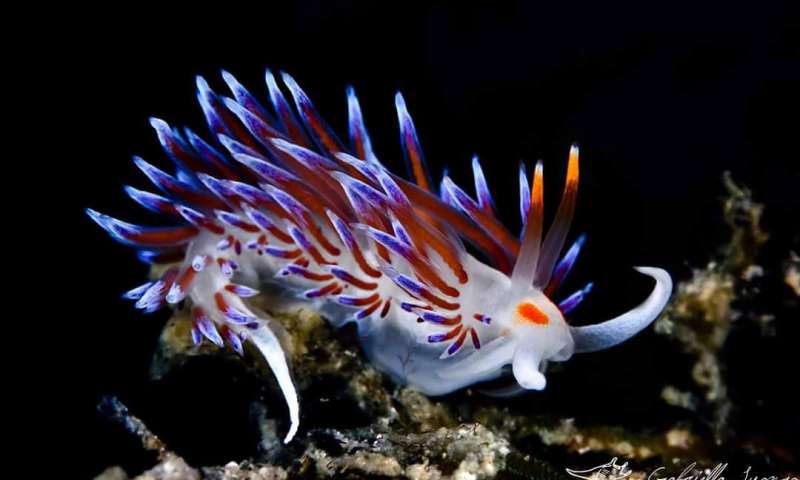A Mediterranean sea slug is an underwater pirate. British researchers found that the animal purposely targeted well-fed hydroids — distant relatives of coral — in order to consume the prey’s prey, so to speak. According to experiments, half of the sea slug’s diet is plankton, which is what the hydroids prey on.

Trevor Willis, a marine ecologist at the University of Portsmouth, UK, calls the intriguing behavior ‘kleptopredation’. The cunning and brutal feeding strategy belongs to Cratena peregrina, a nudibranch species belonging to the sea slug family. It lives off the coast of Sicily where it likes to feed on the branched colonies of Eudendrium racemosum hydroids.
“This is very exciting, we have some great results here that rewrite the text book on the way these creatures forage and interact with their environment,” Willis said.
Secondhand grocery shopping
Hydroid colonies consist of individual polyps that feed on plankton and small crustaceans. After closely following Cratena p.‘s feeding patterns, the researchers found that the nudibranch preferred to eat polyps that had only recently fed. Specifically, the sea slug doubled its attack rate on prey that had just dined on zooplankton. The findings also explain why some biochemical signatures that distinguish predators from prey don’t work out clearly for nudibranchs and hydroids.
Willis says that, effectively, the colorful sea slug is using another species as a fishing rod so it can easily gain access to food it otherwise wouldn’t have. What’s more, the sea slug’s prey does all the work for it.
“People may have heard of kleptoparasitic behaviour – when one species takes food killed by another, like a pack of hyenas driving a lion from its kill for example. This is something else, where the predator consumes both its own prey and that which the prey has captured,” Willis explained.
The researchers first realized that they were dealing with a novel predation pattern after they looked at nitrogen isotope levels in the nudibranchs, hydroid polyps, and zooplankton, discovering that the sea slugs had much lower levels than expected if polyps were their only prey. This investigation suggested that the hydroid polyp represent a fraction of the total mass ingested by the sea slugs.
Oddly, this behavior might actually benefit the hydroid colony in the long-run. By increasing its energy intake from their prey’s plankton diet, the sea slugs effectively consume fewer polyps than they would have otherwise. As such, the nudibranch’s novel predation extends the life of the hydroid colony.
It’s not clear at this point how widespread the behavior is. This is something which Willis and colleagues are investigating.
“Our ability to understand and predict ecosystems in the face of environmental change is impeded by a lack of understanding of trophic linkages,” said Dr Willis, but he added there was still a lot to learn from research. “While we have some great results, like any science worth its salt, it raises more questions than it answers.”
Scientific reference: Kleptopredation: a mechanism to facilitate planktivory in a benthic mollusc, Biology Letters (2017).


